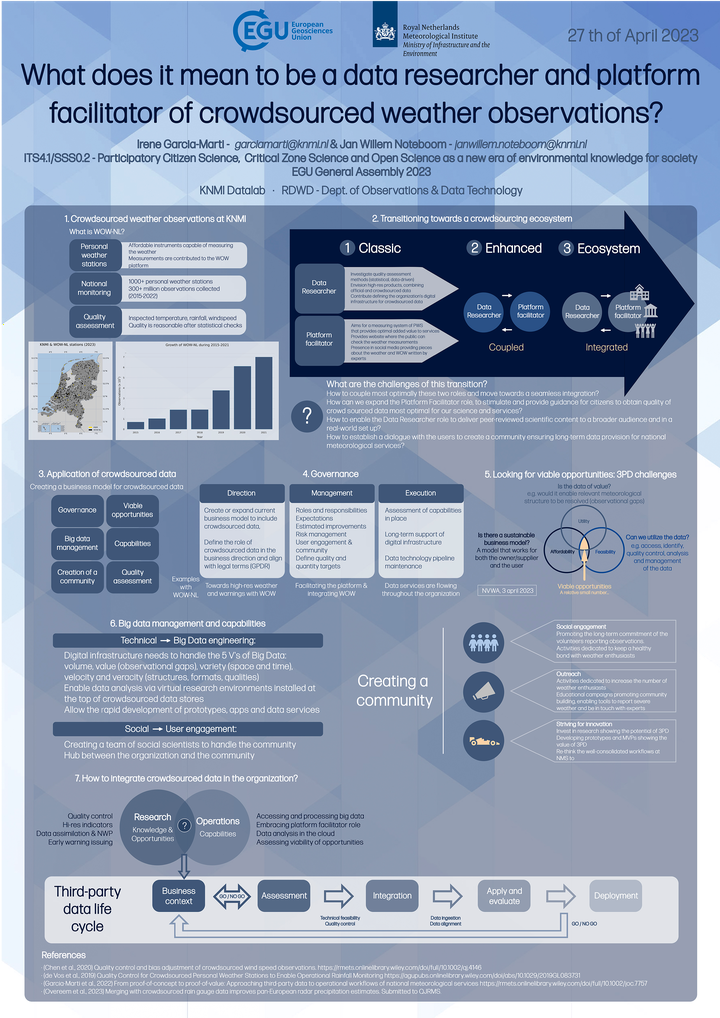What does it mean to be a data researcher and platform facilitator of crowdsourced weather observations?
A contribution to the EGU23 Annual Meeting

Last week week I had the oppportunity of presenting two contributions during the European Geophysical Union (EGU) Annual Meeting 2023 in Vienna. Needless to say, I was excited of attending a conference after the huge hiatus imposed by the pandemic.
In the last years, there has been a buzzing activity at the KNMI around the topic of crowdsourced weather data (aka third-party data, 3PD). At the beginning we focused in developing quality controls and we gradually progressed towards assessing what is the value that these observations have for our organization. Recently, we went one step further, by thinking how can we integrate crowdsourced data in the “daily business” of the organization. We pondered so much about this topic, that we ended up with enough content to make a contribution in the EGU23 conference :-)
The poster was part of a session on “Participatory Citizen Science”, in which we could see the relevance of citizen-produced information to reach locations where no (weather) model, (official) sensor network, or simulation “can see”, yet it is crucial to know some conditions there. Our contribution (read description) took the form of a poster that you can see attached to this post.
Explaining the story associated to this poster would be too lengthy, but I think it can be summarized in three bullets:
- Data Researchers and Platform Facilitators need to articulate the transition towards a “crowdsourced” ecosystem. In this set up, new actors (e.g. academia, organizations, society) become a new and fundamental partner to monitor the weather, with the possibility of receiving tailored-made products and services.
- Integrating crowdsourced data in national meteorological services requires creating a business model for these novel observations. It is important to identify viable opportunities, laying at the intersection of utility, affordability and feasibility.
- Creating a community is of paramount importance to ensure the long-term provision of crowdsourced weather data. Promoting a healthy bond with the data-providing users is crucial. Otherwise, there is a risk that the hi-res services developed today, can’t be sustained in the future.
In case you are curious about this topic, follow this link to find a hi-res version of the poster.